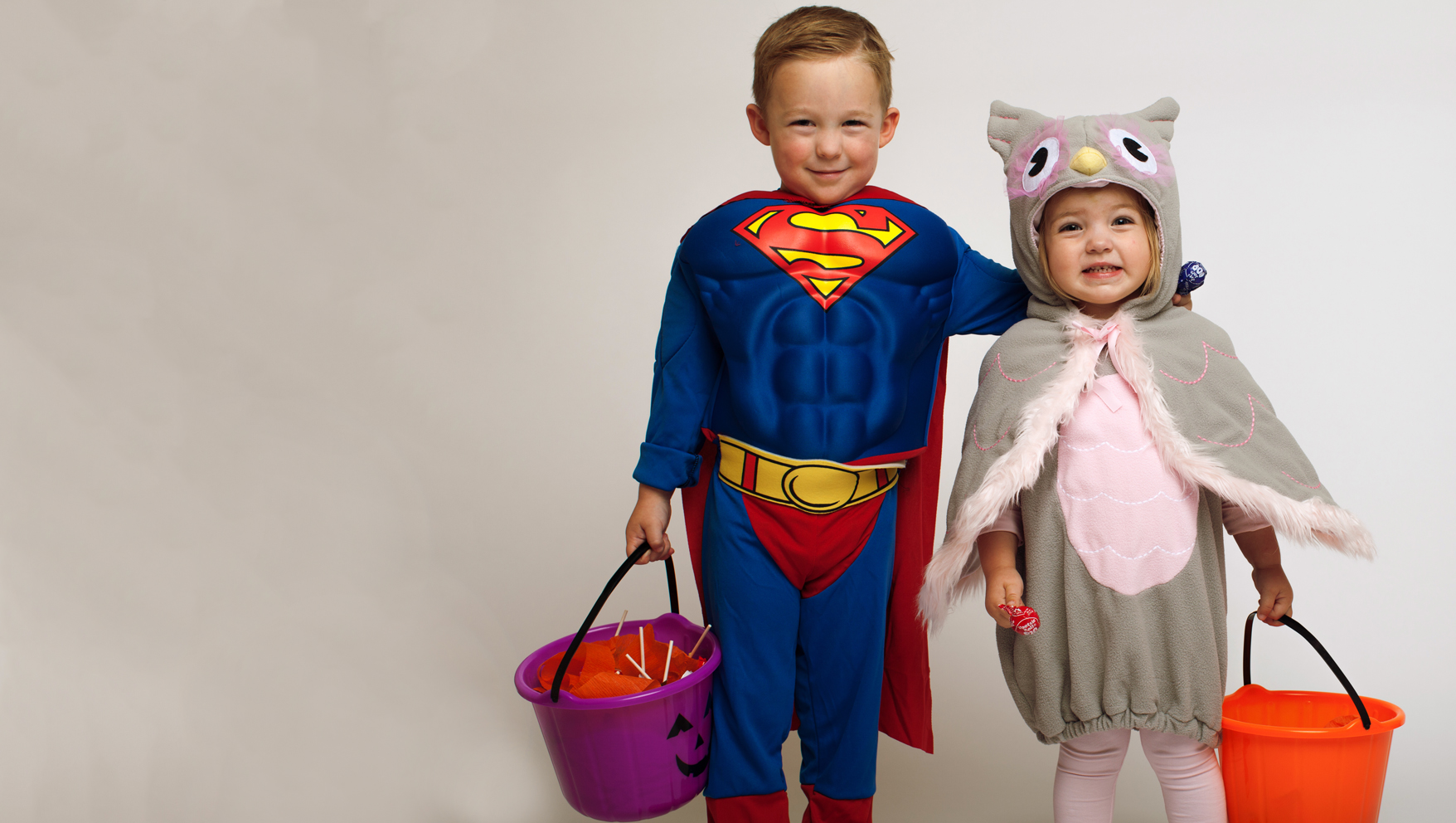How to Talk to Your Kids About Halloween

Halloween remains a hotly debated subject among Christians. While some of us feel that allowing our children to dress up and go trick or treating throughout the neighborhood, or attend our church’s harvest festival, is perfectly fine, others of us avoid anything and everything to do with Halloween, because we believe the whole day glorifies Satan.
Like it or not, living in the USA during the month of October, we are inundated with commercialism centered around Halloween. Costumes, bags of candy, pumpkin patches, the scary and not-so-scary harvest themed decorations, haunted houses, and images of scary movies surround us during the whole month of October! How do we approach this tricky (excuse the pun) subject with our kids?
Is Halloween really evil?
History of Halloween
Let’s look at a little history of Halloween before making that judgement. First, Halloween is truly a contraction of the term “Hallow’s Eve”, which is the night before All Saints’ Day, November 1. All Saints’ Day was a feast day, originally celebrated in the early church on May 13, 609, where the saints who had gone onto Heaven before us were remembered and celebrated in the Mass. In 835, Pope Gregory Pope Gregory IV decided to move the feast day to October 31, to coincide with the pagan celebration of Samhain, typically associated with the Druids’ harvest festivals. (In the early days of the church, there was a concerted effort to assimilate pagan holidays into the celebration of Christian feast days).
Many rituals associated with All Saints’ Day have roots in the Celtic Samhain celebration. Samhain was a time when the door to the “otherworld” was thought to be opened wide enough to allow the souls of the dead and other spirits to enter the land of the living. The souls of the dead were thought to attend the Samhain feasts. People wore costumes to hide their real identities from any evil spirits present. In some places, children would go door-to-door, collecting food for the celebration or fuel for the bonfires. Lanterns were made from turnips, that were carved with faces to ward off evil spirits as well as provide light.
Many of these symbols were adopted into our present day celebration of Halloween. For instance, he use of carved pumpkins instead of turnips became a common practice in the 19th century. Dressing up in costumes became popular in the 1930’s. According to most scholars, trick-or-treating didn’t become popular in the US, until the 1930’s or 40’s.
Reformation Day
While celebrating All Saints’ Day or All Hallow’s Ever may not have been practiced among some Protestants, Reformation Day on October 31, 1617, was celebrated by many. By the 18th century, the 200th anniversary of the Reformation, its observance had become standard in Lutheran churches and many other Protestant faiths. Today, most Lutheran churches celebrate Reformation Day on the Sunday prior to October 31, and some Protestants celebrate All Saints’ Day on November 1.
There are those in the occult who claim that Halloween is their “new year”. And it’s no secret that there are many stories about Halloween being associated with devil worship. But if we are to speak to our children about the history of Halloween, it may be important to tell them that not all the Halloween rituals, which are now such a huge part of our American culture, are based on evil.
How Should Christians Do Halloween?
As with anything we do, we are called to be salt and light to the world. However we approach this topic, whether it be with fellow Christians or those who have not accepted Jesus into their hearts, we must say everything in love and not in a spirit of condemnation or hate. Too many times what we say may be in truth, but saying even the truth in a hateful, self righteous manner will turn off and turn away most people…especially those who we want to bring to the Cross.
God gave us some pretty clear guidelines in Deuteronomy 18 to use for our own protection against evil. It’s important to not glorify the occult, Satan’s darkness, or the fear of death. Since the fall of man, Satan has had power over death, which creates fear in the hearts of man. But, as we know, Jesus conquered death!! We no longer have to fear it!
Keeping within these Biblical guidelines, if your children dress up, make sure they are not glorifying evil. There are a ton of fun costumes to choose from. Halloween doesn’t have to be about glorifying the ugliness of evil. It can be a fun time of fellowship for the whole family–whether that means trunk or treating at your church’s harvest party or trick-or-treating in your own neighborhood with friends, or lovingly handing out snacks to little ballerinas, Obi-Wan’s and assorted clowns. Let His light shine through you at all times, in whatever you say or do! Here are 4 way your family can shine light on Halloween.
What do you do on October 31? Do your kids dress up and go trick-or-treating? Do you go to church and celebrate All Saints’ Day or Reformation Day? What has your experience been, as a Christian, partaking in or abstaining from Halloween?
Sources:
MacCulloch, Diarmaid. The Reformation. A History (New York, NY; Penguin, 2003)
Rogers, Nicholas. Halloween: From Pagan Ritual to Party Night (New York, NY: Oxford University Press, 2006)
Skal, David J. Death Makes a Holiday: A Cultural History of Halloween (New York, NY: Bloomsbury, 2002)
About the author: Lisa Strnad is a writer, promoter and marketer who works in Christian media. She lives with her husband and children in Nashville, TN. Lisa has home schooled both of her boys, and is involved in autism awareness programs throughout the USA.
(The opinions written in this article are not necessarily those of everyone who works with Minno. These thoughts and opinions are that of the author.)